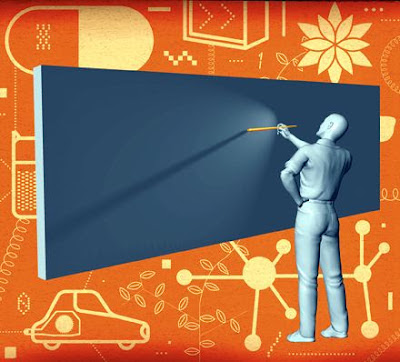HOW big is the impact of the Internet potential on Asia, including the impact on development of the knowledge economy in Asia?
We all have a sense that the Information and Communications Technology (ICT) industry has transformed social media, education and the way business is done. But we are not sure what is the best way to use the Knowledge economy to propel our future growth.
In 1973, American sociologist Daniel Bell predicted the arrival of the Post-Industrial Society by 2000 with a world dominated by service industry, high value professional and technical employment and innovation driven by scientific research.
In 2000, the number of global Internet users was only 360 million, rising to 2.3 trillion with an annual growth rate of 528% between 2000-2011, of which 45% reside in Asia. The highest penetration of Internet is in North America (78.6%), whereas penetration in Asia is only 26.2%, pointing towards huge potential for Asian growth.
According to Internet World Statistics, the top Internet country in Asia is China, with 513 million users, followed by India (121 million), Japan (101 million) and Indonesia (55 million).
Within Asia, the highest penetration is South Korea (82.7%), Japan (80%), Singapore (77.2%), Taiwan (70%) and Hong Kong (68.7%). China has 38.4% Internet penetration.
However, the highest number of Facebook users in Asia is India (45 million), Indonesia (43 million) and the Philippines (27 million). Asia has 195 million Facebook users as at March 2012, or 23.3% of 835 million worldwide, compared to 44.8% penetration in Internet usage. The reason is of course Facebook is not used in China, but even then, there are 447,000 recorded users, less than the number in Cambodia (449,000).
Did you realise that 26.8% of Internet users are English-speaking (565 million), and 24.2% are Chinese speaking (510 million). The third most important language is Spanish (165 million). The Malay language, which is common to Indonesia and Malaysia, is not counted yet among the top 10 languages, mainly because the penetration of the Internet in Indonesia (245 million people) is only 22.4%.
Malaysia has a web usage rate of 61%, with over 17 million people online. The Post-Industrial Society has already arrived in the advanced countries, with the service sector accounting for 76.7% of US GDP, compared with only 1.2% for agriculture and 22.1% in industry. Employment in the service sector already accounted for 77% of total employment in the United States, with the increase in the service sector employment driving employment growth in the coming years.
Within the service sector, three sectors - education services, healthcare and professional and business services (all knowledge industries) are expected to grow at double the speed of employment of the US employment as a whole. In contrast, manufacturing employment is only 10% of total employment in the United States, compared with 28% employed in manufacturing in China. But the service sector in China accounts for only 43% of GDP, compared with 55.2% for India.
What is the relationship between information, knowledge and value creation?
In 1991, one of the pioneers on information theory, Robert Lucky, argued that the information value chain is a pyramid, with the bottom data having no value, classified data becoming valued information, with applied knowledge (technology) having more value, and wisdom, the highest value, being learnt, experienced and useful not only to understand but perhaps predict events.
What the Internet revolution has achieved is to distribute information and knowledge very quickly to the masses across the world. Indeed, the main benefit of the Internet is that it broke down “silos” of specialised information and data that could be shared and used by everyone with access to it.
Indeed, the Internet has enabled “Wiki-knowledge production”, which has produced a huge public good, available to all, with free input by thousands of anonymous volunteers. Public goods are no longer produced by governments, universities or firms, but by the collaboration of thousands of empowered individuals.
There is no doubt that as Asia ponders its own Post-Industrial Society, how it adapts to the new knowledge economy will make a difference between future success or failure.
Leading economies like Singapore and South Korea have devoted tremendous resources into education, research and development in key areas. South Korea even revived its Five-Year Plans to transform itself into a high growth, high knowledge green economy.
Both the Chinese and Indian 12th Five-Year Plans have ambitions to become creative and innovative economies.
In this regard, it is useful to compare and contrast the IBM way towards innovation and value creation versus the Indian approach. In the IBM book Making the World Better (2011), it uses a methodology insiders call SMUBA, an acronym for Seeing, Mapping, Understanding, Believing and Acting.
It is a process to master complex systems and to move from data, analytics and implementation.
Multinationals like IBM now realise that it is impossible to innovate alone by having centralised research laboraties the work is shared and done through key research labs spread throughout the world, through connecting research to product development, academic and government collaboration, internal collaboration across departments and labs, collaboration with clients, innovation by acquisition and open innovation.
In contrast, the Indian model of innovation and value creation is distinct in three ways producing frugal, affordable solutions for the masses without compromising quality, innovation in organisational and process models that improve quality and service delivery, and innovations in the process of innovation (frugal cost solutions through frugal cost of innovation).
The race is already on to produce Asian multinationals and create products to compete with Apple, Amazon, Google or Facebook.
The setback that Samsung faced recently will probably accelerate that process of innovation and competition across Asia.
THINK ASIAN By ANDREW SHENG
Tan Sri Andrew Sheng is president of Fung Global Institute.
Related posts:
Apple's rot starts with its Samsung lawsuit win
Apple wins $1bn in US while Samsung wins in Korea; it may reshape the free Google Android
Apple patent claims stifling innovation; Japan court rules in favour of Samsung





